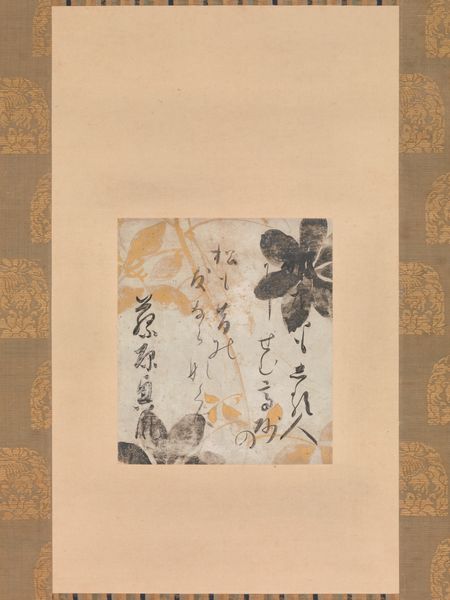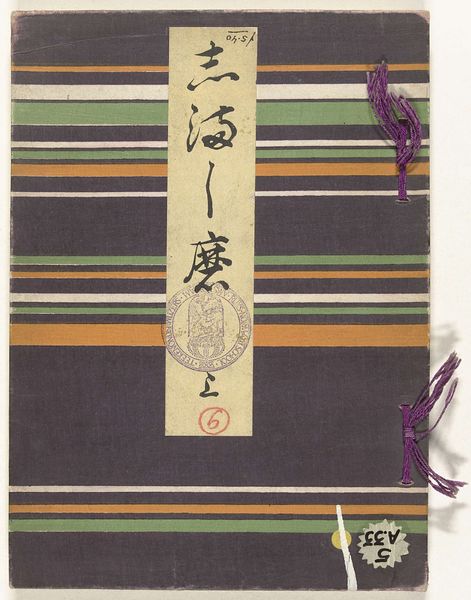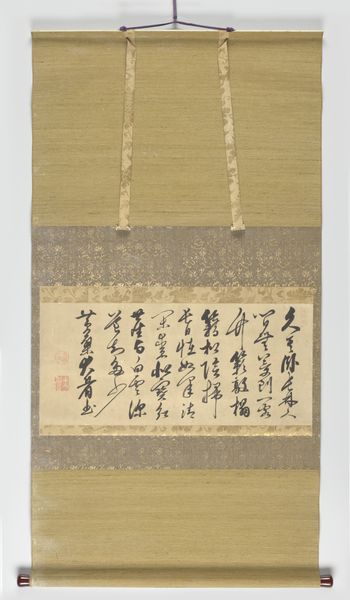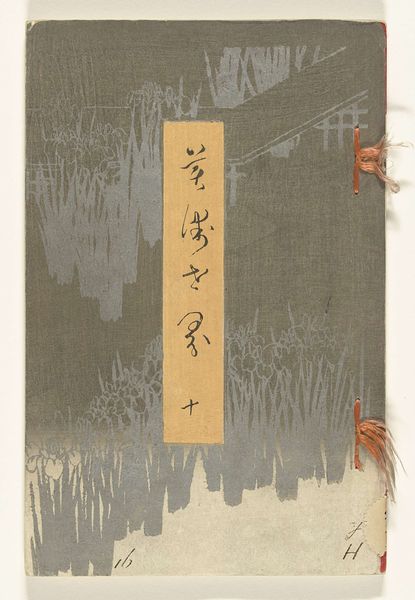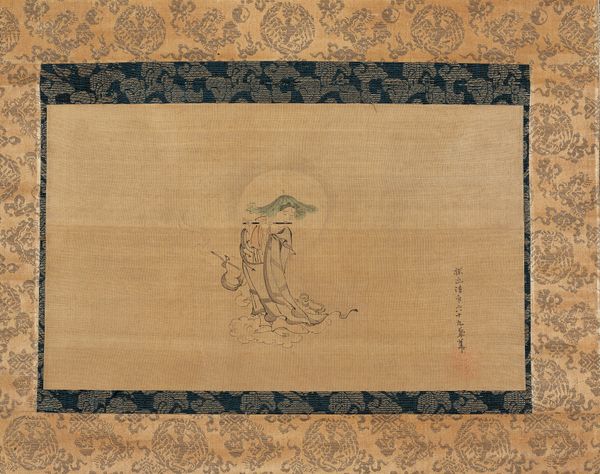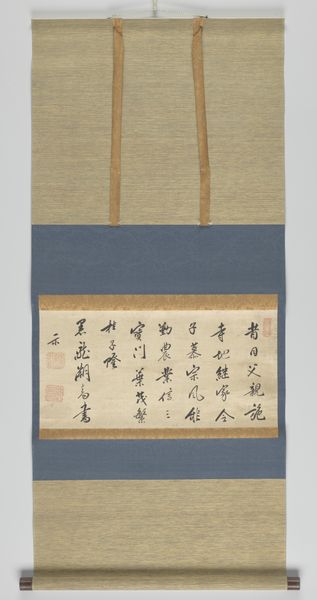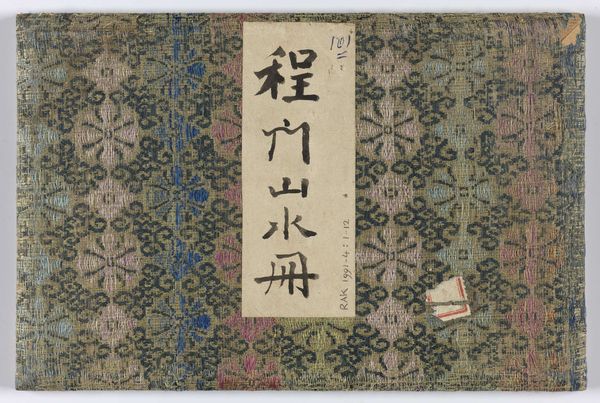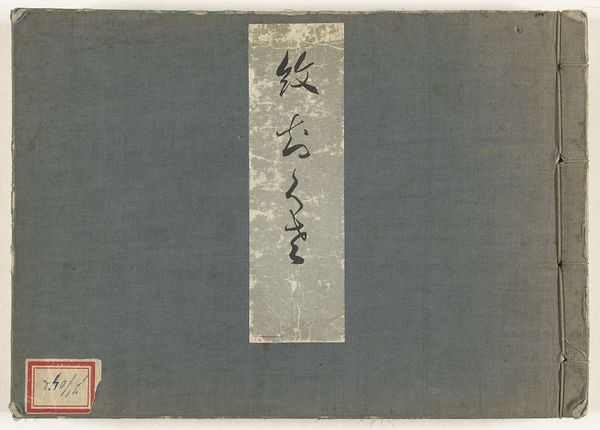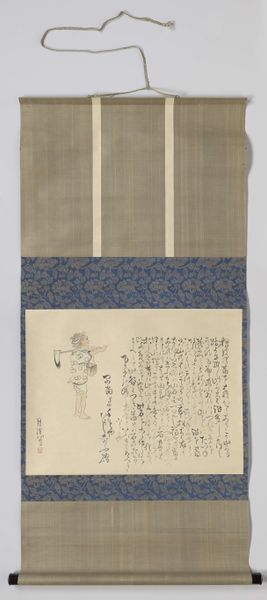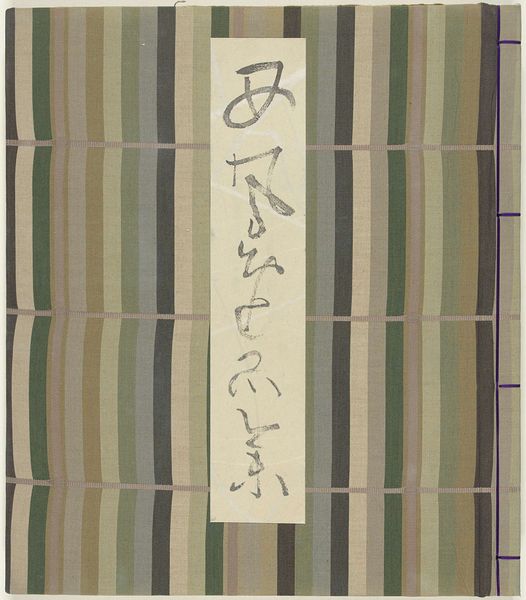
drawing, paper, ink
#
drawing
#
organic
#
asian-art
#
paper
#
ink
#
organic pattern
#
calligraphic
#
line
#
calligraphy
Dimensions: height 482 mm, width 426 mm
Copyright: Rijks Museum: Open Domain
Editor: We're looking at "Meesterwerken van Seiho - deel één" made between 1937 and 1942 by Takeuchi Seihō. It's a drawing on paper, using ink, and the style looks very calligraphic. There's an overall quiet, natural feel. What stands out to you in terms of its historical or cultural context? Curator: Well, given the dating, it's important to view this through the lens of Japan's increasing militarization and wartime atmosphere. The 'organic pattern' might be read not just as aesthetic appreciation of nature, but perhaps also as a subtle visual resistance to the state's focus on industrialization and total control. Do you see how the formal elements, like line and calligraphy, might contribute to this interpretation? Editor: I see what you mean. The deliberate nature of the calligraphic lines juxtaposed with what could be simple organic design could give a message of peace or call for something else entirely when viewed through wartime. How would the cultural institutions of the time influence how this art was viewed? Curator: The cultural institutions – galleries, art schools, even the state-sponsored exhibitions – were increasingly pressured to promote nationalist agendas. Artists like Seihō had to navigate this complex landscape, often employing symbolism that could be read on multiple levels. A piece like this becomes a record of that negotiation, that quiet resistance. Editor: So, it's not just art for art's sake, but a product and a commentary on a specific socio-political moment? Curator: Exactly! And thinking about the role of museums now, exhibiting such work allows us to confront these difficult histories and re-evaluate the complex relationships between art and power. How does seeing it this way change your initial reaction? Editor: It definitely makes me think more about the artist’s intentions, considering that what appears on the surface is usually not the only intention. Thanks for the perspective. Curator: My pleasure. It’s crucial to consider the power dynamics at play when understanding art from any era.
Comments
No comments
Be the first to comment and join the conversation on the ultimate creative platform.


